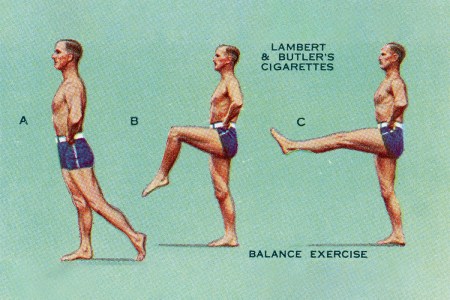The AI era is upon us, and with it a dizzying array of tools for outsourcing our day-to-day productivity.
If you want to find a new job, a plugin called Ambition will scour the entire internet for you. Just tell it what you want to do. If you have to perform a difficult math problem, a tool called Wolfram Alpha will solve it no problem — and show you its work. And if you can’t be bothered to read the rest of this article, ReaderGPT can summarize web pages in simple bullet points. I promise not to be offended.
It isn’t overwrought to declare that anyone willing and able to pay $20 a month (the monthly subscription for ChatGPT-4) now has an A-grade personal assistant at their fingertips. The technology has already permanently changed the way people work, and we’ve barely scratched the surface.
As we begin to fold AI into our lives, though — and perhaps become increasingly reliant on its powers in order to get things done — it’s important to celebrate and preserve the productivity tools, or life hacks, that humans have come up with all on their own.
The 10 Best Breathing Exercises for Sleep, Fitness and Calm
There are a lot of tricks out there. Keep these in your toolkit.You may have caught a recent, fantastical debate between Bill Gates and Socrates, which has been swirling around the internet. As Gates lists the many wonders of artificial intelligence, Socrates ponders whether it might prove a crutch for mankind, devaluing the power of the capable processor that’s already in our skulls. (Ironically, this conversation was generated by AI.)
We’ll go out on a limb here: Socrates makes a good point. Productivity journeys are extremely personal — they involve a ton of failure, pit you face-to-face with discipline, and help you form a routine. They’re certainly not the most exciting hero’s journey, but they’re necessary. Productivity helps you do the things you’ve got to do, so you can do the things you want to do.
Plus: along the way, many conventionally “successful” people (elite athletes, CEOs, etc.) tend to find true pleasure, or flow, in their productivity. It can fuel their sense of purpose. And who wants to cede their life’s purpose to a bot? The AI realist’s way forward, in contrast, would be to marry their hard-earned and personal productivity toolkit, with the many tools that will continue to emerge in the coming years.
Here, we revisit 10 such human-borne approaches to productivity. These are some of the greatest, go-getting procedures of the last century, from miracle mornings to presidential matrixes. These methods can be adapted to fit individual styles and needs, so choose the strategies that resonate with you, then tinker and refine them until you find your productivity sweet spot.
On the off chance that they all sound unfamiliar, tread lightly. Remember: the road to greater productivity isn’t about cramming more tasks into your day. That’s a little too much for the brain to handle, as magnificent as it may be. Let’s leave the short-circuiting to the machines.
15 Mobility Tests to Make Sure You’re Aging A-Okay
From trunk rotations to ankle flexes, these moves are quick, simple and free to tryThe Best Life Hacks of the Last 100 Years
The Eisenhower Matrix
In a 1954 speech, President Dwight D. Eisenhower quoted a university president’s riff on the nature of prioritization: “I have two kinds of problems, the urgent and the important. The urgent are not important, and the important are never urgent.”
Years later, Stephen Covey, the author of The 7 Habits of Highly Effective People, unraveled that tongue-twister and used it to popularize a task management tool. The Eisenhower Matrix divides tasks into four boxes: urgent and important (do first), not urgent but important (schedule for later), urgent but not important (delegate to someone else), and neither urgent nor important (delete from your brain).
The result is a powerful — and highly visual — representation of one’s short and long-term priorities. It takes two tasks off your plate, kicks one down the road and liberates you to channel deep work for the one that’s right in front of you.
The 5-Second Rule
As outlined in one of the most popular Tedx Talks of all time (“How to stop screwing yourself over,” 2011), Mel Robbins’ rule for preventing overthinking and overcoming procrastination. The 5 Second Rule has nothing to do with food dropped on the carpet; it’s a metacognition tool to propel oneself into action.
In order to commit yourself to knocking out a task, expressing a thought or acting on an idea, you simply count down from five…four…three…two…one, and then go. Like a rocket ship — which was Robbins’ original inspiration. She devised the concept at a time when her life was crumbling apart and she was having trouble getting out of bed. This rule helped her commit to her alarm and get her life back on track.
WOOP Goal Setting
This is a recent one, devised by a German psychologist named Gabriele Oettingen and her research team at New York University in the 2010s. The goal-setting strategy stands for Wish, Outcome, Obstacle, and Plan.
Let’s say a guy named Jack wants to run a marathon. That’s his “wish.” The outcome would be Jack’s best possible scenario from this journey — he’d be thrilled with a sub-4:00:00. The next section is critical. Jack is in his mid-forties and slowing down as of late; he has one knee surgery to his name; and the recent return-to-office, plus his kids’ packed schedules, will make training pretty difficult. Those would be his obstacles.
The plan he crafts, though, accounts for obstacles from the get-go. They don’t change his ultimate goal. They just encourage him to craft an “if-then” framework, replete with courses of action designed to mitigate his chances of slipping. While this approach might sound self-evident, it’s natural for people (fictional Jack included) to underestimate life’s hurdles. Identifying them early on can help you stay consistent and motivated while preventing flashes of guilt down the line.
Pomodoro Technique
A classic, developed by Francesco Cirillo in the 1980s — with an assist from his trusty, tomato-shaped, Pomodoro kitchen timer. The process is simple:
- Choose a task you want to work on.
- Set the timer for 25 minutes.
- Work on the task until the timer goes off.
- Take a short break, around five minutes.
- Every four rounds of this, take a longer break.
The method encourages individuals to work with the time they have, rather than fight against it. As it turns out, you can get a whole lot done in 25-minute intervals (which Cirillo refers to as a “pomodoros.”) The process prizes focus and can induce flow, by injecting a bit of urgency into whatever task you’re trying to accomplish. Oh, and, there’s a chance you may already emply some micro-form of the Pomodoro Technique. For instance: when I’m doing laundry, I try to align my emails and/or articles to the wash and dry cycles.
Inbox Zero
Merlin Mann’s mid-aughts credo is slightly misunderstood. Despite the name, he doesn’t think you should delete, archive or respond to all emails in your inbox.
Mann cared less about the obsessive maintenance of an empty inbox, and more about minimizing the mental energy spent on email. The thrust: our attention is demanded by numerous inboxes — work emails, personal emails, social media, messaging apps, missed phone calls. We can’t possibly handle everything, so we should learn to prioritize what really matters to us.
Among his recommendations are some familiar ideas (routine tech detoxes, limiting email checks to certain hours of the day) and a brilliant retrofit of the Golden Rule: treat others’ inboxes as we would want our own to be treated. Think of it as a digital stewardship, intended to cut down on unnecessary communication and time-wasting, which will benefit you, in kind.
100 Ways to Live to 100: The Longevity Fitness Guide
Coastal living, board games, not eating hot dogs. It’s all in here.Paper Clip Strategy
In his bestseller Atomic Habits, James Clear unpacks the curious tale of Trent Dyrsmid, a rookie stockbroker who managed to haul in $5 million of business in his first year and a half on the job. Dyrsmid was neither a prodigy nor a fraudster; he just knew how to play with paper clips.
Using 120 paper clips and two jars, Dyrsmid made a habit of moving a paper clip from one jar to another after each sales call he made, providing a tangible representation of his progress throughout the day. He gamified his workplace habit formation, essentially, with the paper clips serving as both reminder and motivator for the task at hand.
The genius of this strategy lies in its visual representation of progress. With a goal of moving every single paper clip to the other jar by the end of the day, Dyrsmid could keep easy tabs on his progress. The approach taps into a universal truth of behavior change: to build a habit, you simply have to do the thing.
The Feynman Technique
An early favorite feature for many in the AI age — you can ask a chatbot to explain a concept as if it were talking to a six-year-old. It’s a fantastic way to glean a quick, working knowledge of whatever topic’s at hand.
This sort of prompt shares similarities with the Feynman Technique, named after the Nobel Prize-winning physicist Richard Feynman, who declared that if you can’t explain something in simple terms, you don’t understand it. His technique challenges students to teach a concept to a hypothetical child, simplifying language and bridging gaps in logic along the way. This methodology encourages active learning, while quickly illuminating areas of misunderstanding.
And it isn’t just a learning tool; the Feynman Technique has a knack for coaxing out one’s best critical thinking and communication skills. It may have originated in the complex world of quantum physics, but its application is universal.
Gratitude Journaling
Positivity is a friend to productivity. If you don’t buy it, think about how hard it is to focus on a project after a fight with a spouse, or after a car nearly clips you in the crosswalk on the way to work. Choosing to live with forgiveness, with grace, with gratitude — making a point to savor things, day after day — is really freaking hard. But it’s worth it.
Gratitude journaling is one of the best ways to get yourself in the habit. Extolled by countless thinkers, though popularized by influential researchers like Robert Emmons and Michael McCullough, the simple self-care practice involves daily writing about whatever things you’re finding yourself grateful for.
Done right, gratitude journaling can reduce stress, improve mental well-being and encourage better sleep. For its most faithful devotees, it’s more than just a list of thank-yous; it’s a thoughtful reflection that can counterbalance our brain’s inherent negativity bias, and an invocation to celebrate the everyday and the extraordinary in equal measure.
The Miracle Morning
In recent years, research has emerged on the genetic delta between “early birds” and “night owls.” The latter isn’t more slovenly than the former — night owls are just predisposed to different sleep-wake cycles, which makes attacking the morning a little more difficult for them.
But while neither productivity nor purpose are entirely dependent on Goggins-esque wake-ups, turbocharged morning routines can be transformational. Hal Elrod’s 2012 book, The Miracle Morning, urges adults to claim early hours for their own, armed with a powerful acronym: SAVERS. It stands for Silence, Affirmations, Visualization, Exercise, Reading, Scribing.
Assign a set amount of time to each activity (sit in silence for 10 minutes, read yourself personal affirmations for 10, and so on) to set a tone for the day that is holistically healthy. The Miracle Morning has an impact on one’s mental, emotional, and physical wellbeing. The core theme here is intentionality — no matter when you get up, you’re not already on your back foot, scambling as you react to the day. You’re actively participating in it. You have a plan.
Mind Mapping
This one was technically formalized in the last 100 years — British psychologist and author Tony Buzan codified the method the 1970s — but various iterations of “mind mapping” have been around for centuries. Buzan was inspired by the cognitive exercises of Greek philosophers, Leonardo Da Vinci and Albert Einstein.
Mind maps are centered around a singular concept or problem (written or drawn — though pictures often work best), with related ideas or solutions radiating outward in branches. They can further subdivide into smaller branches, like the twigs of a tree, each with relevant keywords, phrases or images. Whatever pops into your brain. Parsing brainstorms into such a graphical manner has a positive association with creativity, memory, and comprehension.
You don’t need to be a murder detective for your problems to deserve the full corkboard treatmemt. And the endgame here isn’t even to land on a solution, necessarily. It’s about freeing yourself from boring, sequential thinking, and learning to appreciate the many whims that meteor across your mind. That’s a productive pursuit in its own right.
Whether you’re looking to get into shape, or just get out of a funk, The Charge has got you covered. Sign up for our new wellness newsletter today.

















